Accept all cookies Accept only essential cookies See our Cookie Notice

About ESA
The European Space Agency (ESA) is Europe’s gateway to space. Its mission is to shape the development of Europe’s space capability and ensure that investment in space continues to deliver benefits to the citizens of Europe and the world.
Highlights
ESA - United space in Europe
This is ESA ESA facts Member States & Cooperating States Funding Director General Top management For Member State Delegations European vision European Space Policy ESA & EU Space Councils Responsibility & Sustainability Annual Report Calendar of meetings Corporate newsEstablishments & sites
ESA Headquarters ESA ESTEC ESA ESOC ESA ESRIN ESA EAC ESA ESAC Europe's Spaceport ESA ESEC ESA ECSAT Brussels Office Washington OfficeWorking with ESA
Business with ESA ESA Commercialisation Gateway Law at ESA Careers Cyber resilience at ESA IT at ESA Newsroom Partnerships Merchandising Licence Education Open Space Innovation Platform Integrity and Reporting Administrative Tribunal Health and SafetyMore about ESA
History ESA Historical Archives Exhibitions Publications Art & Culture ESA Merchandise Kids Diversity ESA Brand Centre ESA ChampionsLatest
Space in Member States
Find out more about space activities in our 23 Member States, and understand how ESA works together with their national agencies, institutions and organisations.
Science & Exploration
Exploring our Solar System and unlocking the secrets of the Universe
Go to topicAstronauts
Missions
Juice Euclid Webb Solar Orbiter BepiColombo Gaia ExoMars Cheops Exoplanet missions More missionsActivities
International Space Station Orion service module Gateway Concordia Caves & Pangaea BenefitsLatest
Space Safety
Protecting life and infrastructure on Earth and in orbit
Go to topicAsteroids
Asteroids and Planetary Defence Asteroid danger explained Flyeye telescope: asteroid detection Hera mission: asteroid deflection Near-Earth Object Coordination CentreSpace junk
About space debris Space debris by the numbers Space Environment Report In space refuelling, refurbishing and removingSafety from space
Clean Space ecodesign Zero Debris Technologies Space for Earth Supporting Sustainable DevelopmentLatest
Applications
Using space to benefit citizens and meet future challenges on Earth
Go to topicObserving the Earth
Observing the Earth Future EO Copernicus Meteorology Space for our climate Satellite missionsCommercialisation
ESA Commercialisation Gateway Open Space Innovation Platform Business Incubation ESA Space SolutionsLatest
Enabling & Support
Making space accessible and developing the technologies for the future
Go to topicBuilding missions
Space Engineering and Technology Test centre Laboratories Concurrent Design Facility Preparing for the future Shaping the Future Discovery and Preparation Advanced Concepts TeamSpace transportation
Space Transportation Ariane Vega Space Rider Future space transportation Boost! Europe's Spaceport Launches from Europe's Spaceport from 2012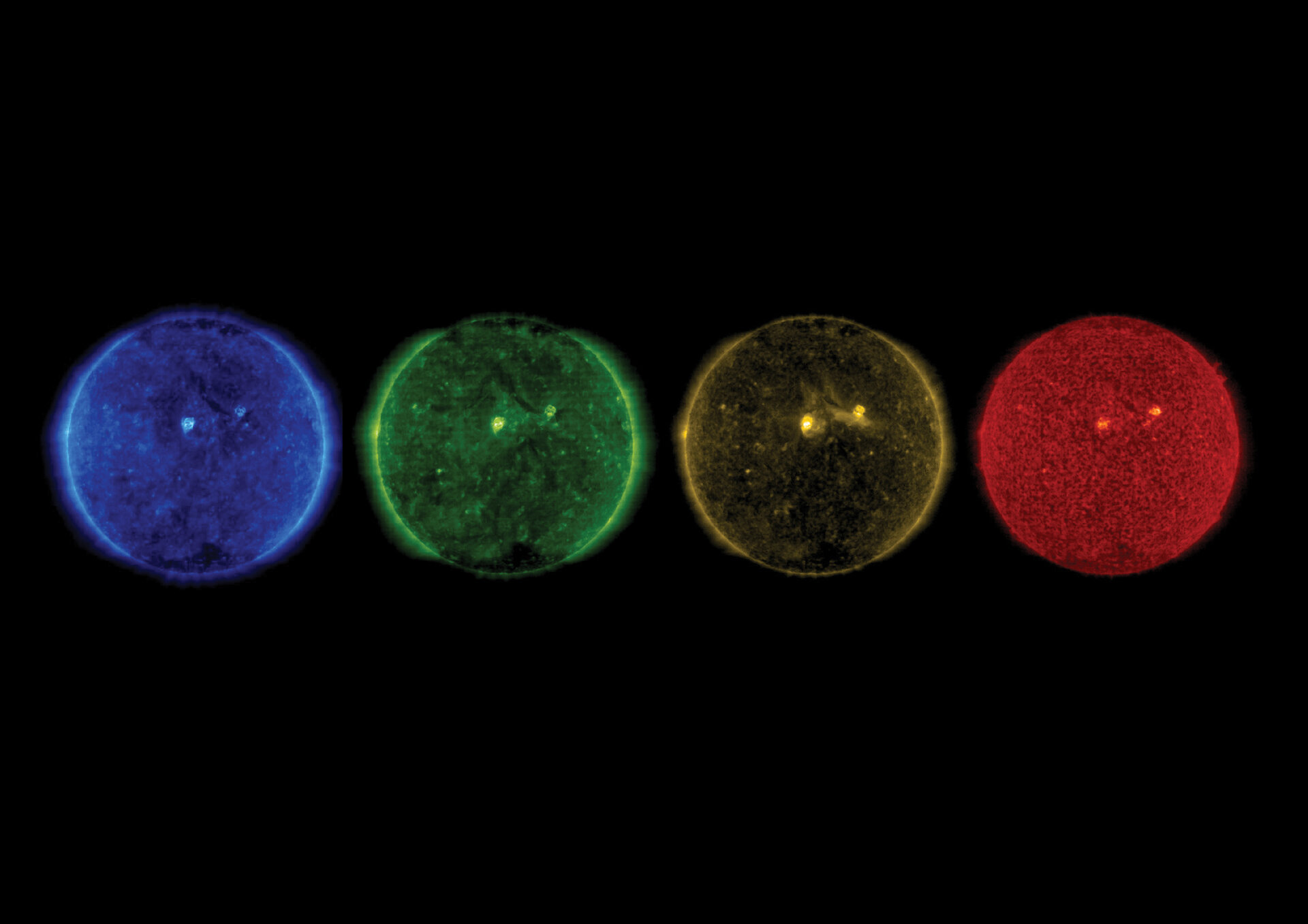
SOHO’s equinox Sun
Thank you for liking
You have already liked this page, you can only like it once!
Last Wednesday, all locations on our planet enjoyed roughly the same number of hours of day and night. This event, called an equinox, takes place twice a year – around 20 March and then again around 23 September.
On these two occasions along Earth’s yearly orbit around the Sun, sunlight shines directly overhead at the equator. The March equinox marks the beginning of spring in the northern hemisphere and of autumn in the southern one, and vice versa for the September equinox.
The ESA/NASA SOHO solar observatory enjoys an alternative view of our parent star, staring at the Sun since 1995 from a vantage position – orbiting the first Lagrange point (L1) some 1.5 million kilometres from Earth towards the Sun. Over the years, SOHO has been monitoring the surface and stormy atmosphere of our star, as well as keeping an eye on the solar wind, the flow of charged particles streaming out through the Solar System, enabling a wealth of scientific discoveries.
This montage of images shows SOHO’s view of the Sun at different ultraviolet wavelengths in the early morning of 20 March; the equinox occurred at 21:58 GMT. From left to right, the images shown in this view were taken at increasing wavelengths (171 Å, 195 Å, 284 Å and 304 Å, respectively) with SOHO’s Extreme ultraviolet Imaging Telescope, which currently takes snapshots of the Sun twice a day.
Each wavelength channel is sensitive to solar material at a different range of temperatures, peering at different heights into the Sun’s atmosphere. From left to right, the brightest material in each image corresponds to temperatures of 1 million, 1.5 million, 2 million and 60 000–80 000ºC, respectively.
Similar SOHO views of the Sun were also featured in a previous Space Science Image of the Week in 2017. Look at them side by side to spot any differences between the Sun then and now. For more information about SOHO, including realtime images of the Sun, visit: https://soho.nascom.nasa.gov
Meanwhile, at the IABG facilities in Ottobrunn, Germany, the Solar Orbiter spacecraft is undergoing final testing ahead of launch early next year. This new joint ESA/NASA mission will perform unprecedented close-up observations of the Sun from a unique orbit that will allow scientists to study our star and its corona in much more detail than previously possible, as well as providing high-resolution images of the uncharted polar regions of the Sun.
Remember: never look directly at the Sun!
-
CREDIT
ESA/NASA, SOHO -
LICENCE
ESA Standard Licence
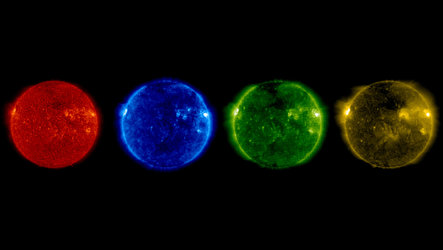
SOHO’s summer solstice Sun
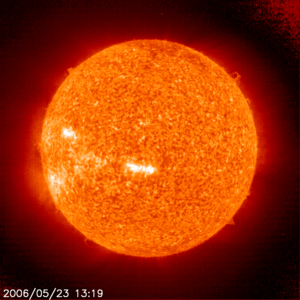
SOHO's image of the Sun

The Sun today
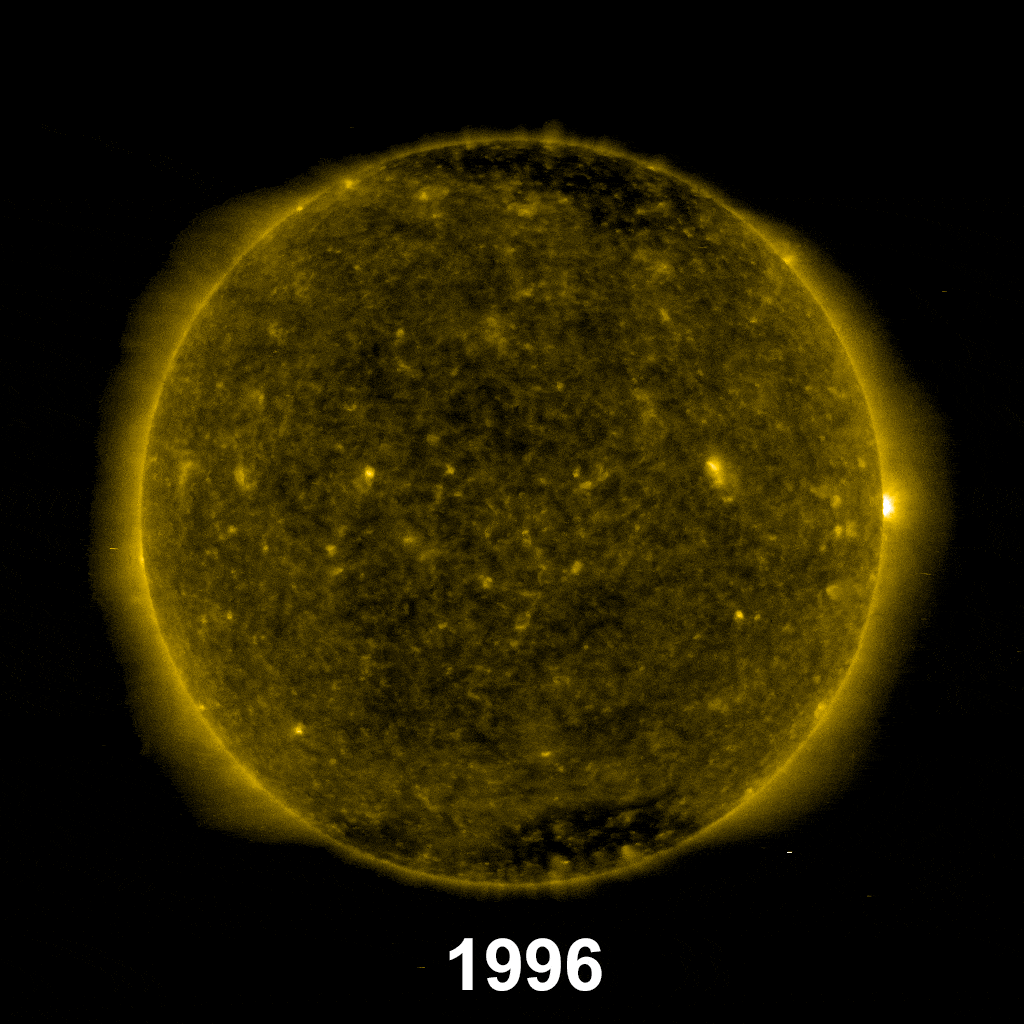
SOHO: 25 years of solar imaging
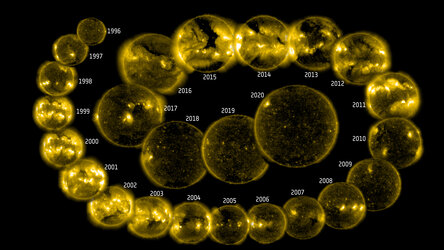














 Germany
Germany
 Austria
Austria
 Belgium
Belgium
 Denmark
Denmark
 Spain
Spain
 Estonia
Estonia
 Finland
Finland
 France
France
 Greece
Greece
 Hungary
Hungary
 Ireland
Ireland
 Italy
Italy
 Luxembourg
Luxembourg
 Norway
Norway
 The Netherlands
The Netherlands
 Poland
Poland
 Portugal
Portugal
 Czechia
Czechia
 Romania
Romania
 United Kingdom
United Kingdom
 Slovenia
Slovenia
 Sweden
Sweden
 Switzerland
Switzerland

























